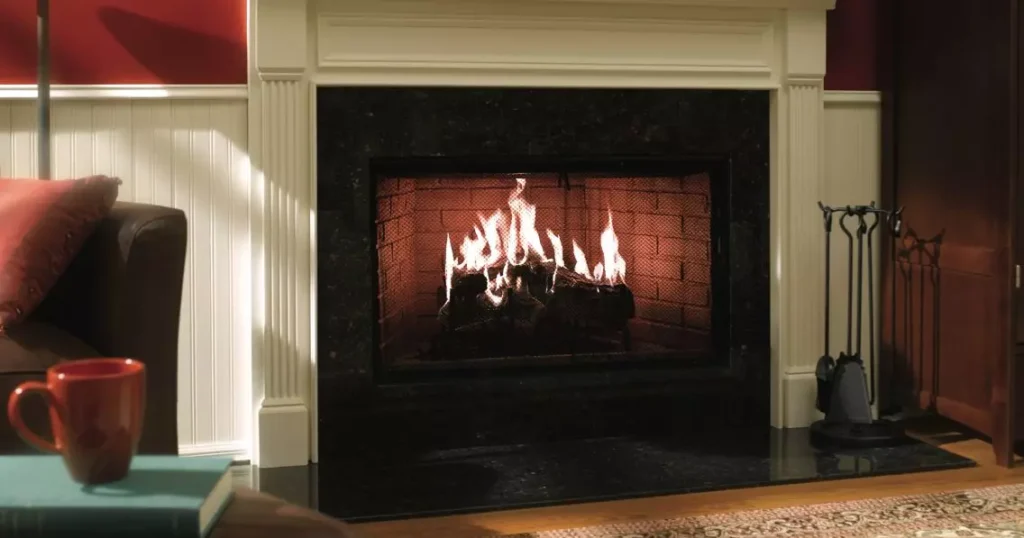No one ever installs a fireplace expecting cold drafts coming out of the fireplace. How is that supposed to keep you warm?! Fireplaces are a source of warmth and pleasure… good times with friends and loved ones. People do not expect more heat lost going up the flue than out into the fireplace surround area, yet that is a common problem with many fireplaces.
There are several signs you can look for to determine if your fireplace is leaking air:
• First,visible cracks or holes in fireplace walls, doors or dampers. Look for any visible gaps or cracks in the masonry, tile lining or metal components of the fireplace. These air leaks allow heated air to escape the fireplace.

• Then,fireplace doors or dampers don’t seal properly. Ensure fireplace doors, glass doors or dampers close fully and seamlessly against seals or gaskets. Any gaps allow air leaks. Weatherstripping tape or new seals may help fix minor issues.
• Next,air flowing through vents when fireplace is not in use. Air leaking from the fireplace will continue to flow out of vents even when the fireplace is not lit or dampers are closed. This means air is escaping through leaks.
• Also,drafts near fireplace. Use a lit candle or incense stick and look for visible air movement and smoke trails near the fireplace. This indicates there is air leaking out around the edges.
• Higher than expected heating costs. Unnoticed air leaks and heat escaping from the fireplace can significantly increase the amount of wood or heating oil needed to heat your home. Spiking fuel costs may indicate air leakage issues.
• In addition,blower motor runs constantly. An air leak may cause the fireplace’s blower fan to run continuously in an attempt to push air into and circulate heat/smoke through the fireplace. This wastes energy and points to a leak.
• Also,smoke escaping through chimney when fireplace is not in use. Any smoke escaping from the chimney indicates air is leaking into the chimney and creating drafts. This allows smoke to flow up and out even without an active fire.
• Furthermore,water damage or creosote buildup in chimney. Excessive air leaks can allow damp air, moisture and condensed gasses into the chimney over time creating water damage or creosote accumulation. This must be remedied to avoid health and safety issues.
• Finally,professional chimney sweep recommends repair or replacement. A chimney sweep, who is trained to inspect chimneys and air intakes, can spot even small signs of leaks and air leakage that an amateur may miss. Follow their recommendations to ensure safe operation.
In conclusion,the only way to fully diagnose air leaks in a fireplace is through visual inspection with the help of a chimney sweep or professional heating contractor if needed. Look for any noticeable signs of leaking air and the potential impacts to ensure you remedy air leakage issues completely to maximize heating efficiency and safety.

